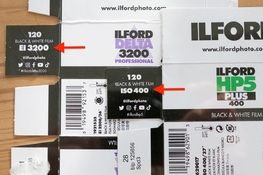Doremus Scudder
Member
Well, I use a number of metering techniques depending on the camera I'm using (admittedly mostly spot-metering these days).I was hesitant to jump in on this, but after reading quite a few threads that touch on the same thing (metering technique), I'm going to ask.
When we say something like "...Your personal metering technique." What are we asking? I understand that if you a meter a scene with an slr, and I meter a scene with a pentax digital spot meter, there may be some variance. An incident meter or spot meter only work properly in one way. If we both meter a scene (the same scene for arguments sake) with the same meter that is calibrated properly, what would the variables be?
Each person's opinion regarding the important parts of the scene (shadow placement and/or highlights) are the only things I can come up with. I see "metering technique" come up a lot and am simply curious.
I feel like what we all do with what the meter tells us is where either the magic or folly occurs.
as to t-grain films, I don't consider myself a fine enough printer to know whether Tmax or Delta films have prevented me from attaining the sublime. I'm pretty happy with negatives I have from both films and lately I just try and think more about what the EI will mean regarding my exposure times in the field.
If one is using a spot meter and basing exposure on a shadow value that one wants to be rendered in a specific way, then visualization and the correlation of that with a particular desired print density/rendering comes into play. Let's say I want a shadow to be rendered as a luminous Zone IV. Well, that's my idea of "luminous Zone IV," not anyone else's. My testing and experience have taught me that if I use X E.I. and place the shadow in Zone IV and develop with XY developer for XYZ minutes with my particular brand of agitation, I can make a print that displays the density and "feeling" for the shadow that I wanted, along with my vision/desires for the other densities as well. Someone else may have a totally different idea of how Zone IV should look, not to mention where the other values in the scene should fall (which would affect development time), so may need a different E.I. to achieve those desired results. Point being, even with the exact same equipment, differences in individual approach and desired result occasion different E.I.s.
What if you use your spot meter to find an average value between the highest and lowest value you want detail in? That's going to result in a very different E.I., which will often be different depending on the luminance spread. Or if I'm using my spot meter to measure and place a skin tone, etc.
If I'm basing my exposure on an average or center-weighted value (determined by my TTL in-camera meter), I'll test to see which E.I. gives me the shadow detail I desire. This E.I. even for the same film I use spot-metering, might be significantly different, since I'm no longer visualizing a shadow value a là ZS and basing exposure on that (which generally results in a lower E.I.), but indirectly controlling shadow density by changing exposure for a metered mid-tone or average value.
If I'm using an incident meter, I might meter both in the main light and in the shadow to determine lighting ratio and base exposure on that, adjusting either E.I. or adding exposure compensation depending upon that ratio. And, what if my meter doesn't read like yours? I have several meters, only two of them agree to within 1/3 stop. I have "compensation factors" depending on which meter I'm using.
I haven't even dealt with flat or contrasty scenes, which require compensation, nor what kind of print someone likes to make; rich and full of mid-tone values, or spiky and snappy with lots of contrast but lacking shadow separation (who needs that anyway!), etc., etc.
What you point your meter at makes a difference too. Including bright sky in your meter's field most of the time? Maybe you need a lower E.I. Point your meter away from the sky all the time to avoid that? You'll need a higher E.I.
Metering techniques are highly personal, which is why E.I. is personal as well.
Best,
Doremus








